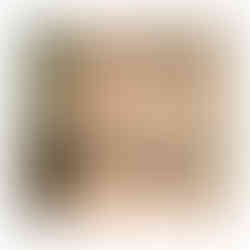Understanding Festoons: Causes, Treatments, and Success Stories
- Jean-Paul Abboud, MD, PhD
- Aug 8, 2024
- 3 min read
Updated: Feb 9
As an oculofacial plastic surgeon, I often encounter patients concerned about festoons. These unsightly puffy areas on the lower eyelids and upper cheeks can significantly impact one's appearance and self-confidence. In this blog post, I will explain what festoons are, their causes, the challenges in treating them, and share a success story from my practice.
What are Festoons?
Festoons, also known as malar mounds, are swollen, bag-like formations on the lower eyelids and upper cheeks. They are often confused with eye bags, but festoons are typically more pronounced and located lower on the face. Festoons can give the face a tired or aged appearance, making them a common concern among patients seeking rejuvenation.
Causes of Festoons
The exact cause of festoons is not fully understood, but several factors can contribute to their development:
Genetics: A family history of festoons can increase your likelihood of developing them.
Aging: As we age, the skin loses elasticity, and fat deposits can shift, creating festoons.
Sun Exposure: Prolonged sun exposure can damage the skin and accelerate aging.
Lifestyle Factors: Poor diet, smoking, and excessive alcohol consumption can exacerbate festoons.
Medical Conditions: Conditions such as allergies, chronic sinusitis, or fluid retention can lead to the formation of festoons.
Known Treatments for Festoons
Treating festoons is challenging due to their complex nature. Here are some of the known treatments:
Surgical Excision: Direct removal of the festoons through surgery.
Laser Resurfacing: Using CO2 lasers to tighten and smooth the skin.
Injectables: Certain medications can be injected to reduce swelling and improve skin texture.
Non-surgical Treatments: Chemical peels, microneedling, and radiofrequency treatments can also be effective in some cases.
Why Are Festoons Difficult to Treat?
Festoons are difficult to treat because they are often caused by a combination of factors, including skin laxity, fat displacement, and fluid retention. Each patient’s festoons may differ in their underlying causes and severity, requiring a personalized approach to treatment. Additionally, festoons can be resistant to some treatments and may require a combination of therapies to achieve the desired results.
Frequently Asked Questions
How do I get rid of festoons? The best way to get rid of festoons is to consult with a specialist who can evaluate your condition and recommend a tailored treatment plan. Options may include surgical excision, laser resurfacing, and injectables.
What are festoons caused by? Festoons are caused by a combination of factors, including genetics, aging, sun exposure, lifestyle factors, and certain medical conditions.
What is the treatment for festoons? Treatments for festoons include laser resurfacing, radiofrequency, surgical excision, injectables, or a combination of these methods, which can enhance skin texture and reduce swelling.
Are festoons caused by lack of sleep? While lack of sleep can contribute to puffiness around the eyes, festoons are more complex and typically result from a combination of factors, including genetics and aging.
What is the difference between festoons and malar edema? Festoons and malar edema are often used interchangeably, but they refer to different conditions. Festoons are puffy, bag-like formations on the lower eyelids and cheeks, while malar edema is a more generalized swelling in the same area.
Success Story: Treating Festoons with Direct Excision, 5-FU Injections, and CO2 Laser Resurfacing
Recently, a patient came to me with severe festoons that had been affecting her self-confidence for years. After a thorough evaluation, we decided on a combination treatment approach.
Step 1: Direct Excision I began by surgically excising the festoons to remove the excess tissue. This step significantly reduced the appearance of the festoons.
Step 2: 5-FU Injections Following the surgery, I injected 5-Fluorouracil (5-FU) into the affected area. 5-FU is known for its ability to reduce scarring, which helped in further refining the results. [LEARN MORE]
Step 3: CO2 Laser Resurfacing Finally, I performed CO2 laser resurfacing on the lower eyelids and upper cheeks. This advanced laser treatment tightened the skin, reduced wrinkles, softened the scars, and enhanced the overall appearance. [LEARN MORE]
The results were remarkable. The patient’s festoons were significantly reduced, and her skin looked smoother and more youthful. The following video demonstrates my surgical technique.
Dr. Abboud is an oculofacial plastic surgeon in San Diego who is an expert on cosmetic eyelid surgery. He is board-certified by the American Board of Ophthalmology (AAO) and is a member of the American Society of Ophthalmic Plastic and Reconstructive Surgery (ASOPRS).
For more information about treatment options for festoons and under eye rejuvenation, or to schedule a consultation with Dr. Abboud for personalized advice on eyelid surgery, call our office at 858.356.2647
These are images of actual patients of Dr. Jean-Paul Abboud. They are shown for informational purposes only and are provided with written patient consent for use on this website. Please do not copy or distribute images/videos. Each individual’s treatment and/or results will vary, and no guarantee is stated or implied by any photo or statement used on this website.









